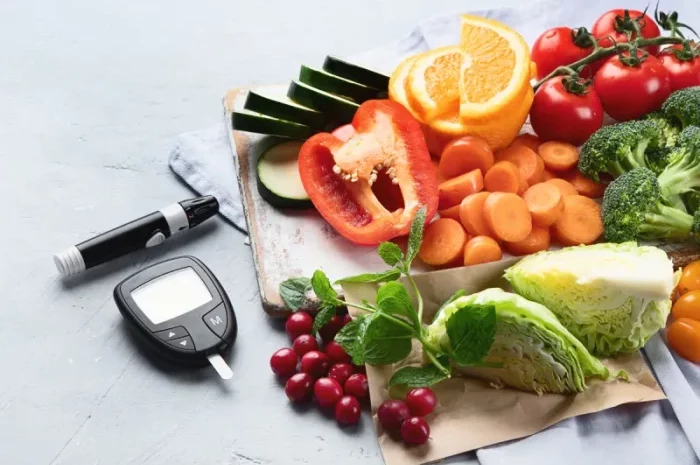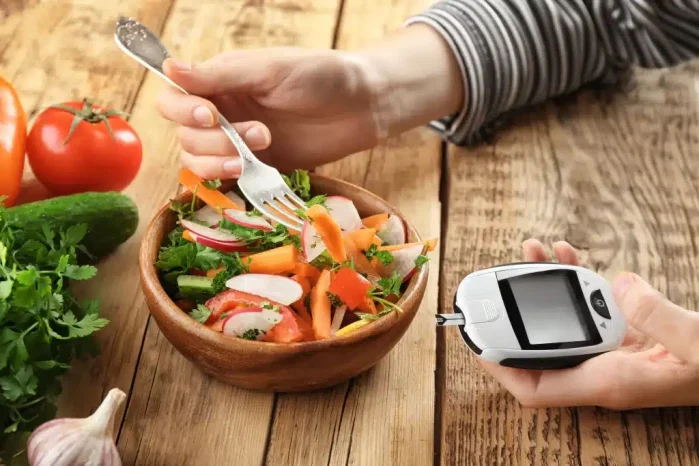Diabetes, particularly Type 2 diabetes, is a chronic condition that affects millions of people worldwide. It occurs when the body becomes resistant to insulin or when the pancreas fails to produce enough insulin. While medication and lifestyle changes play crucial roles in managing the condition, diet has emerged as one of the most effective ways to manage, and in some cases, reverse Type 2 diabetes. Research suggests that making strategic dietary choices can help improve insulin sensitivity, regulate blood sugar levels, and even reduce the need for medication. This article will explore the types of foods that can help reverse or manage diabetes effectively, the science behind their benefits, and how to incorporate these foods into a sustainable, balanced diet.
Understanding Diabetes and the Role of Diet
Before diving into the specific foods, it’s important to understand how diet impacts diabetes and how the condition progresses. Type 2 diabetes is primarily driven by insulin resistance, where the body’s cells no longer respond to insulin as efficiently as they should. As a result, glucose accumulates in the bloodstream, leading to high blood sugar levels. Over time, the pancreas struggles to keep up with the demand for insulin, and blood sugar levels remain elevated.
A healthy diet can help reverse Type 2 diabetes by improving insulin sensitivity and reducing inflammation. Certain foods have the ability to support weight loss, reduce fat storage, and promote the function of insulin. Additionally, eating a balanced diet rich in nutrients helps prevent complications associated with diabetes, such as cardiovascular disease, kidney damage, and nerve damage.
Key Principles of a Diabetic-Friendly Diet
Before exploring specific foods, it’s important to understand the principles of a diet that supports blood sugar regulation and insulin sensitivity:
High Fiber: Fiber slows the absorption of sugar into the bloodstream, preventing rapid spikes in blood glucose levels. Foods high in fiber also improve digestion and promote satiety, which can aid in weight management.
Low Glycemic Index (GI): Foods with a low GI release sugar into the bloodstream more slowly, helping to avoid large fluctuations in blood glucose levels. The lower the GI, the less likely it is to cause spikes in blood sugar.
Healthy Fats: Healthy fats, particularly those found in plants and fish, help reduce inflammation and support metabolic processes, including insulin sensitivity.
Protein-Rich: Lean protein sources are essential for muscle repair and regeneration and can help stabilize blood sugar levels by slowing down the absorption of carbohydrates.
Antioxidant-Rich: Foods rich in antioxidants help reduce oxidative stress, which is often elevated in individuals with diabetes and contributes to insulin resistance and other complications.
Foods That Help Reverse Diabetes
1. Leafy Greens and Non-Starchy Vegetables
Leafy greens like spinach, kale, collard greens, and Swiss chard are among the best foods for people with diabetes. These vegetables are low in calories, high in fiber, and rich in vitamins, minerals, and antioxidants. Leafy greens are also very low in carbohydrates, making them a perfect choice for stabilizing blood sugar levels.
The high fiber content of leafy greens helps regulate blood sugar levels by slowing the absorption of sugar into the bloodstream. Additionally, these vegetables are rich in magnesium, which has been shown to improve insulin sensitivity.
How to Incorporate Them: You can add leafy greens to salads, smoothies, soups, or even use them as wraps in place of high-carb tortillas.
2. Whole Grains
Whole grains such as quinoa, brown rice, oats, barley, and farro are excellent sources of fiber, vitamins, and minerals. Unlike refined grains, which cause rapid spikes in blood sugar, whole grains have a low glycemic index and release sugar slowly into the bloodstream.
The fiber in whole grains also helps regulate digestion and promotes feelings of fullness, making them a good option for weight management. Whole grains also contain essential nutrients like magnesium, which plays a role in regulating blood sugar levels.
How to Incorporate Them: You can use whole grains as a base for salads, stews, or as a side dish to your main meals. Opt for whole grain versions of pasta, bread, and rice to increase fiber intake.
3. Nuts and Seeds
Nuts and seeds, such as almonds, walnuts, chia seeds, flaxseeds, and pumpkin seeds, are packed with healthy fats, fiber, and protein. These nutrients work together to stabilize blood sugar levels and improve insulin sensitivity. The healthy fats found in nuts and seeds also help reduce inflammation, a key factor in insulin resistance.
Several studies have shown that regular consumption of nuts can help improve blood sugar control and reduce the risk of developing Type 2 diabetes. For example, almonds are rich in magnesium and vitamin E, which have been linked to improved insulin function.
How to Incorporate Them: You can eat nuts and seeds as a snack or add them to yogurt, smoothies, or salads. Chia seeds can also be used in puddings or as an egg substitute in baking.
4. Berries
Berries such as blueberries, strawberries, raspberries, and blackberries are rich in antioxidants, fiber, and vitamin C. They have a low glycemic index and are packed with compounds that help reduce oxidative stress and inflammation—two factors that contribute to insulin resistance.
Berries are also rich in polyphenols, which have been shown to improve insulin sensitivity and reduce the risk of Type 2 diabetes. Their fiber content helps slow down sugar absorption, preventing spikes in blood glucose levels.
How to Incorporate Them: Berries can be enjoyed fresh, frozen, or added to smoothies, oatmeal, or salads. You can also mix them into yogurt for a quick, healthy snack.
5. Fatty Fish
Fatty fish such as salmon, mackerel, sardines, and trout are rich in omega-3 fatty acids, which have powerful anti-inflammatory properties. Omega-3s help reduce the inflammation associated with insulin resistance and improve overall metabolic function.
Research has shown that omega-3 fatty acids can improve insulin sensitivity, reduce triglyceride levels, and lower the risk of heart disease—common complications for people with diabetes. Fatty fish are also a great source of protein, which helps regulate blood sugar levels.
How to Incorporate Them: Include fatty fish in your diet two to three times a week. Grill, bake, or pan-sear fish with healthy herbs and spices for a nutrient-dense meal.
6. Legumes
Legumes, including lentils, chickpeas, beans, and peas, are rich in protein, fiber, and complex carbohydrates. These foods have a low glycemic index, which means they are digested slowly and help prevent spikes in blood sugar levels.
The fiber in legumes helps improve digestion and promotes satiety, which can aid in weight management. Additionally, legumes are a great source of folate, iron, and magnesium, which help support metabolic health and improve insulin sensitivity.
How to Incorporate Them: Add legumes to salads, stews, soups, or make them into a protein-rich dip like hummus. Legumes can also be used as a meat substitute in vegetarian or vegan meals.
7. Avocados
Avocados are rich in monounsaturated fats, which are heart-healthy fats that help improve insulin sensitivity. They are also high in fiber and contain important nutrients such as potassium, which helps balance blood pressure levels. The healthy fats in avocados can help reduce inflammation and prevent the development of insulin resistance.
Additionally, avocados have a low glycemic index, making them a great choice for managing blood sugar levels. Their high fiber content helps slow down the absorption of sugar into the bloodstream, preventing rapid spikes in glucose.
How to Incorporate Them: Enjoy avocados in salads, sandwiches, or as a topping for toast. They can also be blended into smoothies or used in guacamole.
8. Cinnamon
Cinnamon is a spice that has been shown to improve insulin sensitivity and lower blood sugar levels. It contains compounds that mimic the action of insulin, helping cells absorb glucose more efficiently. Cinnamon also helps reduce inflammation and improve overall metabolic health.
Studies suggest that cinnamon can significantly reduce fasting blood sugar levels and help lower HbA1c levels, which reflect long-term blood sugar control.
How to Incorporate It: Sprinkle cinnamon on your morning oatmeal, add it to smoothies, or use it in baked goods. It can also be added to tea or coffee for a warm, flavorful beverage.
9. Turmeric
Turmeric contains curcumin, a powerful antioxidant and anti-inflammatory compound. Curcumin has been shown to improve insulin sensitivity, reduce blood sugar levels, and decrease inflammation in individuals with Type 2 diabetes. It also helps protect against complications associated with diabetes, such as heart disease.
Including turmeric in the diet may help reverse insulin resistance and improve overall blood glucose regulation. When combined with black pepper, curcumin’s absorption is enhanced, making it even more beneficial.
How to Incorporate It: Add turmeric to soups, stews, curries, and smoothies. You can also enjoy turmeric tea, known as “golden milk,” for a soothing, anti-inflammatory drink.
10. Garlic
Garlic has long been known for its medicinal properties, and it is particularly beneficial for people with diabetes. Garlic contains compounds like allicin, which have been shown to improve insulin sensitivity and lower blood sugar levels. Additionally, garlic helps reduce inflammation, lower cholesterol, and improve cardiovascular health—all critical factors for individuals with diabetes.
How to Incorporate It: Use fresh or roasted garlic in cooking, add it to sauces, soups, or roasted vegetables. Garlic can also be used to flavor meat and fish dishes.
Putting It All Together: Building a Diabetes-Reversal Diet
To effectively reverse Type 2 diabetes or manage blood sugar levels, it is important to build a balanced, nutrient-dense diet around the foods listed above. A well-rounded diet should focus on whole, unprocessed foods, while avoiding refined sugars and processed carbohydrates, which contribute to insulin resistance and high blood sugar.
Here are some tips for creating a diabetes-friendly meal plan:
Focus on whole foods: Choose unprocessed, nutrient-dense foods that are rich in fiber, healthy fats, and antioxidants.
Balance macronutrients: Include healthy fats, lean proteins, and low-GI carbohydrates in every meal.
Portion control: While the foods listed above are beneficial, it is still important to manage portion sizes to maintain healthy weight.
Stay hydrated: Drink plenty of water throughout the day to support optimal metabolic function and help manage blood sugar levels.
Incorporating these foods into a daily diet, along with regular physical activity and appropriate medical management, can help prevent the progression of diabetes and potentially reverse the condition over time.
Conclusion
While there is no single food that can “cure” diabetes, research continues to show that diet plays a central role in managing and potentially reversing Type 2 diabetes. By focusing on nutrient-dense foods that improve insulin sensitivity, reduce inflammation, and support metabolic health, individuals with diabetes can better manage their blood sugar levels and reduce the risk of complications. Through a combination of smart food choices, regular exercise, and professional medical guidance, it is possible to regain control over your health and potentially reverse the effects of Type 2 diabetes.
Related topics:
What Foods to Avoid During Gestational Diabetes



























